Nemesis - a wondrous guest of our gardens, which came to our latitudes from Africa. Nemesis has more than 50 varieties in his homeland. In order to survive in the hot climate of alpine pastures of Africa, Nemesis has some devices. For example, a long rod root. In our climatic conditions, uncomples can be grown in the garden only as annual, because This plant is simply not adapted to low temperatures. But you can grow in the nozzy and as a houseplant, and then it will delight you and in winter. These gentle flowers have a huge number of colors. The decorative value of this plant is actually great. Nemesis will become a real favorite among all blooming plants on your flowerbed or plot. This plant is remarkably suitable for decorating the site. Even greater attractiveness of Nemesis gives simplicity and ease in her care and landing. This will especially become novice flowerflowers who were confused in the variety of decorative-flowering plants. Be sure to try to grow this flower in your site. With its unusual name, Nemesis is obliged to the ancient Greek winged goddess - Nemesis. In this article, consider in detail all the subtleties of landing and care for Nesia, we learn information about the variety of varieties of this bright flower.
Photo Nemezia
Types and varieties of nemensia
Nemesia Foetens. This type of nemensia does not grow too high, it reaches 40 cm. The abundance of small, but very bright flowers gradually declares the ripening stalks to the ground. Each flower has a characteristic feature inherent in this type, is a yellow spot on the lower petal, or "lip". Flowers with a diameter of up to 1.5 cm please the eye with bright blue, pink, blue and many other paints. The most popular varieties of Nemezia Lazzoreau are:
- Coconut Ice (Coconut Loda);
- Woodcote;
- Joan Wilder.
Nemesia Floribunda (Nemesia Floribunda). This is not the most common form of Nemesis among the flower water. And all this because of very small flowers, the smallest among all types of non-daisy. But the gentle and cute view of this plant will necessarily have to taste those people who admire the simplicity of wildflowers, because Nemesis is very similar to Nesia. Unfortunately, even the seeds of this plant acquire a very problematic due to its non-proliferation.
Nemesia Hybrida.This hybrid variety was obtained by crossing the nemesia of beobovoid and uncommium multicolored. This annual starts branching from the base and reaches a height of 30-60 cm. Flowers are reached in diameter 2 cm and have a two-life whisk.
- Fragrant Cloud. The variety was bred in the UK. Nemesis Fragrant Cloud is able to withstand a decrease in temperature to 10-12 degrees. It grows to a maximum height - 20 cm, adult plants have a flip view. After the seeds are tuned, shoots off almost to the ground level. After that, the growth of young shoots begins, and then the second wave of flowering. It is not known exactly the crossing of which varieties was obtained by Fragrant Cloud. Perhaps it was Nemmona Lazzore and Nemesis finely, because They have similar external signs and the same fragrance.
- Thumbelina. This variety will also be interested in novice flowerfish, because Does not require trimming, although it blooms all summer. It reaches 20 cm in height and has rather large, up to 3 cm in the diameter of the flower of soft blue or lavender. The stems are slightly inclined to the ground, and if you grow this uncomple in containers or suspended pots, it is beautifully decorated with these containers.
Nemesia Strumosa (Nemesia Strumosa). This annual grows up to 30 cm in height and has a strong branch. Orange, yellow, pink, red flowers reaches 2.5 cm in diameter and have an irregular shape. Grown since 1892. One of the best varieties of this species are:
- FUNFAIR;
- Sparklers;
- Fire King;
- National Ensign;
- Orange Prince;
- Carnival Mixed.
Nemesia Versicolor.Herbal plant reaching 25 cm in height. It is one of the original types of non-daisy, which was used for crossing, as a result of which many hybrid varieties were obtained. Externally resembles a non-comiating be boring, but has flowers to slightly smaller in diameter.
- Bluebird;
- Edelblau.
How to grow nemesy at home
The most common methods of growing nemesia are a seed method and a seaside. It is impossible to say that some of these ways is easier, and some kind of harder. When growing across seedlings, you will get an earlier flowering, and when landing immediately in open ground - later. But many choose just the last way, because They do not quite like to mess with empty boxes, cups, etc. Consider more nuances of each of these methods.
Growing Neshimia Fashion Sowing Seeds in Outdoor Soil
Seeding seeds immediately in open ground must be carried out 2 months before the desired flowering. But remember that Nemesis is a feet of hot Africa, and it does not tolerate low temperatures. So it is better to sow seeds when it's time for night freezes - the end of the spring-beginning of summer. For this flower, the flower will fit light, fertile, sandy soil. In a pre-prepared and branded land, make a hole at a distance of 20-25 cm. Nemesis loves space, so the colors will have a brighter color, and your plantings will be stronger. There is no need to deepen the seeds, it will suit a thin layer of soil. Be sure to hide sowing. Daily open the film, ventilate seedlings and remove the condensate. After the seedlings are growing, they can be fertilized 1 time in 1.5 weeks.
Growing nemesia through seedlings
Growing through seedlings is quite commonly used by gardeners Method of reproduction of Nemesis. Although you have to be faced with seating with seating and its further transplant, you will receive a quick blossom of this bright flower. First you need to prepare a container for growing seedlings. It should have holes at the bottom to ensure good air permeability and in order to prevent water stagnation. Any universal soil is suitable, which makes sand. Nemesi seeds are very small, and difficulty in their sulfur may arise. It is desirable that in one hole was one seed. Since the two grown seedlings will interfere with each other, and send them without damaging the root system, is very difficult. You can use an ordinary pencil, moisten it with water, and to carry seeds to the ground with it. After, pour plantings with a thin layer of land. Do not forget to spray with water. By the way, several droplets of energy can be added to the water. Then cover the box with glass or polyethylene. The cultivation of seedlings is not over. Check your plantations every day, check and remove the condensate. If this is not done, mold may appear.
Sometimes the following problems may occur when growing seedlings after removal of shelter:
- the seedlings began to dry due to dryness of air, the operation of heating devices;
- seedlings began to die due to random draft or frost.
Do not despair, it may be seedlings still can be saved. Take a pencil and immerse it in the ground in the middle of the box, and in the top cover with polyethylene, without turning its edges under the box. So you will receive mini-guys, which will return comfortable conditions for Neshimia.
At the end of May, it is possible to plant seedlings to the site, at a permanent place of growth. Nemesis is not demanding of the soil, but it will not be superfluous to prepare it - make a humus or compost. Gently remove seedlings with an earthen room, trying not to damage it. Sit into the wells at a distance of 15-25 cm. The first time is better to hold plants under the shelter for their better strengthening.
How to care for nemesia
Nemesis is a beautiful decorative plant that requires a minimum effort to care. All major actions were during cultivation and transplants to the soil seedlings. As soon as Nesias have strengthened at its main place of growth, your manipulations are minimized - almost one watering. So, some are not cunning tips on Nemesis care:
- Timely watering. Watering should not be too abundant. It can be said, it should be in arid weather and the phase of active flowering.
- Timely weeding. Weeding from weeds not only creates aesthetically beautiful view of the plant, but also protects it from pests and diseases.
- The soil looser. You need to loose the soil neatly, not assigated the plant itself. So, you will ensure the best influx of air and moisture by the plant.
- Removal of flashing inflorescences. If suddenly Nemesis stopped blossoming in the middle of the summer, then cut her shoots. After such a procedure, the intensive growth of young shoots will begin and, as a result, the second wave of flowering will begin.
- Feeding If you have enough fertile soil, then Nemesis calmly can do without feeding. But it will not be superfluous to make fertilizers in the phase of active flowering. Any complex fertilizers containing nitrogen and potassium are suitable. Standard spend no less than 2 times in 1 month.
How to collect seeds in nemensia
If you will correctly take care of this flower, then you will be quite able to assemble your own boarding material so as not to buy seeds in the store. The box with seeds is the fruits of Nemesis. To collect them, it is better to choose a day with windless weather. Seeds are very small, elongated shape, black, in 1 grams contained up to 3600-3700 seeds. The collected seeds need to be dried, and then stored in the paper bags in the cool room. They can be stored for up to 2-3 years.
Diseases and pests of Nemesis
Fortunately, the gardeners, Nemesis, is the flower that is practically not susceptible to disease and pests. This is another huge plus that adds attractiveness to this flower. Therefore, if you are afraid of a huge amount of pests, with which you need to fight with a huge number of chemicals, then feel free to choose to land at home in the site. This annual will definitely not create you such problems. The only pest that still can ruin the pleasure of growing this plant is cute tick.
Why can nemensia can destroy this pest? Because the web tick is absolutely omnivorous and it doesn't care on what plant to settle. He can start to destroy the plants not only in the garden plot, but also at home. In order to help the plant in time, the enemy needs to know in the face and know the basic symptoms of its destructive for the plant of life. Signs that your Nemesis has undergone a paustorate as the following:
- pale yellow, red or silvery spots on the leaves;
- little white specks on the inside of the sheet - tick eggs;
- white membranes between the stem and leaves are the started stage of the lesion of the plant with a tick.
Tick \u200b\u200bthough very small, but you can try to see it. If you do not work, but you still think that the plant is infected, then try the insects on a white sheet of paper. As a rule, if the ticks really have, then falling on paper, immediately rush to the edge of the sheet to take the "inner" side. Specialized stores offer a wide range of chemicals to combat tick. We can also independently create an adverse atmosphere for it. The tick just hates high humidity. Perhaps he got on your nemesia, because She was in stressful conditions for her dry conditions. It is useful to periodically spend spraying or watering the entire garden from the hose.
Using Nemesis in Decorative Gardening
Nemesis is the flower that can decorate the most porone and not a colorful plot. It will look great in any form of flower. Unusually bright colors of this flower will help create the desired color accent to create the opposite or, on the contrary, balancing shades and paints in the garden. Uncomple you can easily plant right on the lawn. This kind of flowerba will look very impressive and naturally, as if a colored lake of a bizarre form on bright green grass. Uncomple can be planted and along the pavement tracks, near the curbs. Playing color combinations, you can build unusually bright compositions. Alpine slides with nemes lined in them will look alive and colorfully for the whole summer.
Nemesis has another advantage for landscape design - this is the possibility of planting it in pots. Beautifully descending down stems with numerous colors will cover the pots, creating the illusion of a huge "color ball". You can land Nemesia to hanging porridge and decorate the veranda, terrace or even a balcony in the apartment.
If you are worried about how Nemesis will be combined with other decorative-blooming flowers on your flowerbed, then these fears are completely in vain. This unpretentious plant will perfectly fit into the company from Vitytsev, Petunia, Pansy, Lelchezy. You will see that Nemesis can be wonderful not only by the "soloist" on the flower bed, but also to be successfully grown in group landings. Any water on your site will also be a good background for this bright flower. Whether a small pond or spray fountain, all this will be beautifully shaking the beauty of Nemesis.
There is one plant, with whom it is still undesirable to grow nemesia. This is a lion zev. Why are these plants do not be friends? All because externally they are very similar, and their joint ensemble will not allow to appreciate the beauty of each flower separately. Since Nemesis is a rather low plant, according to the rules for creating flower compositions on the site, it is possible to combine it with plants of another height. Playing with the forms and sizes of your plantations, you can grow simply amazing beauty a multi-tiered flower garden that will delight your eyes throughout the summer. The thinking composition of such flower beds, be sure to take into account the time and timing of flowering of each plant so that it does not work out "empty" stains when the flowering period is one of them. The charm of Nemesis is that you can pick up completely any color and, thus, to plant a flower garden in more or less close to each other, monochrome or completely opposite. On various horticultural sites, you can find a huge amount of information with detailed schemes and outlines of such beds. Nemesis may well be one of the plants involved in their creation.
Do not be afraid to experiment with paints on your site and create bright songs! Such unpretentious, outwardly simple, but very colorful flower, like Nesia, will become a real assistant for you in this matter.


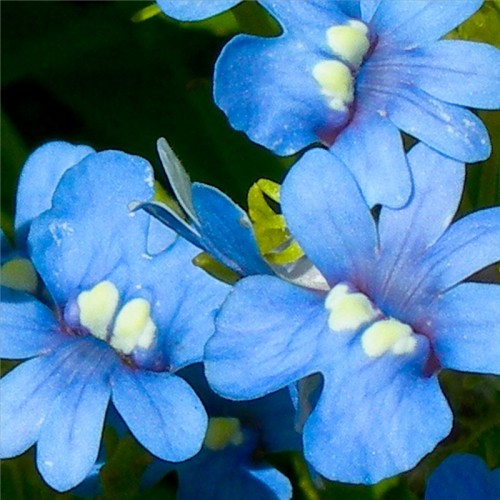
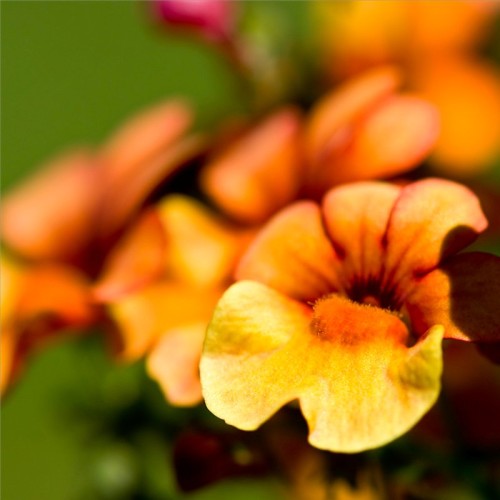
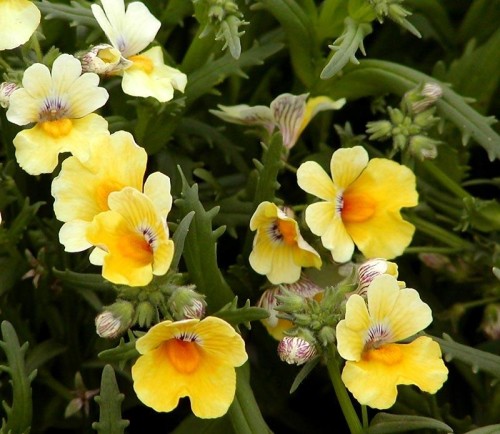
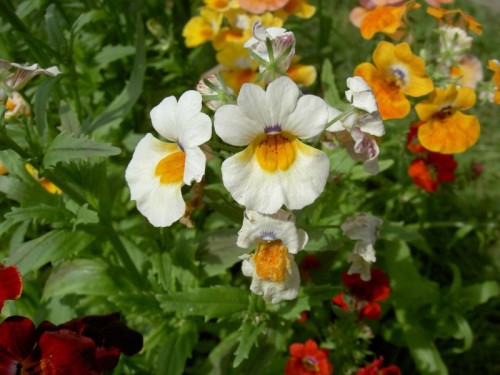
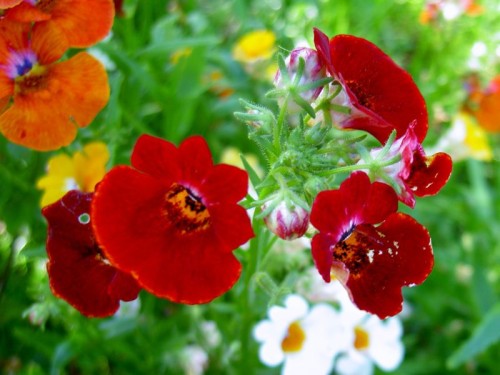
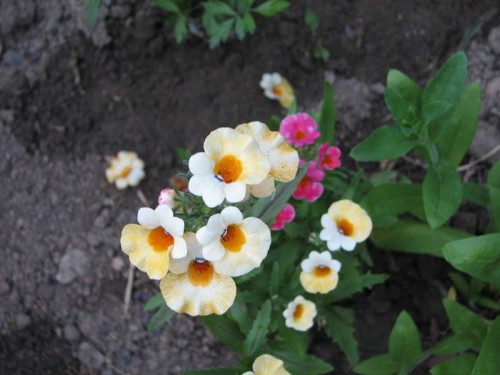
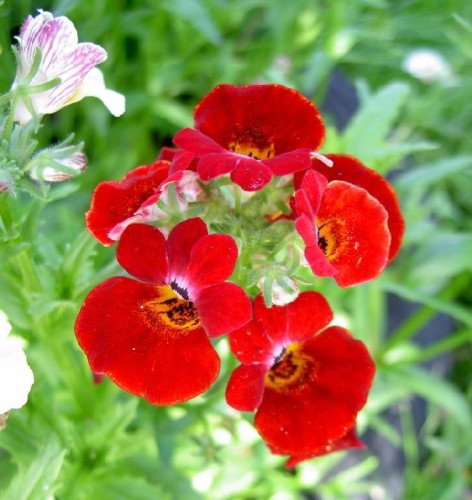
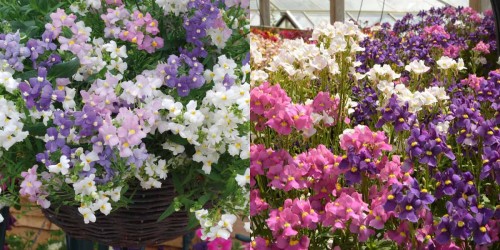
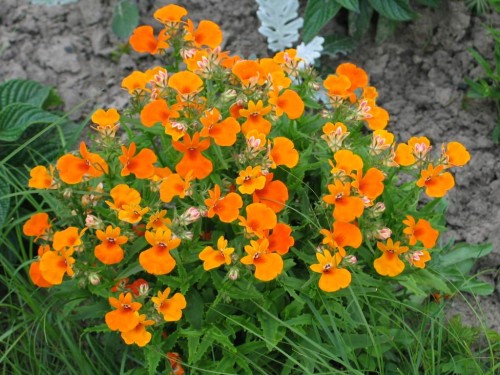
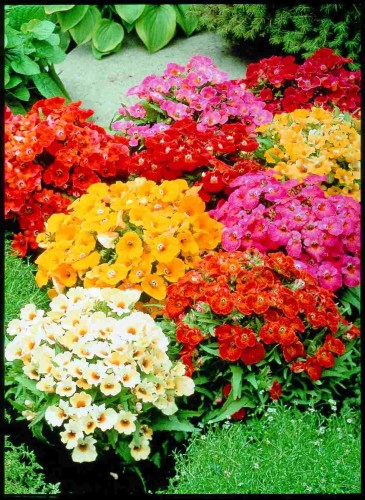
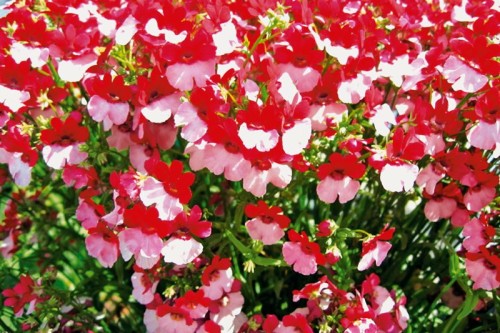
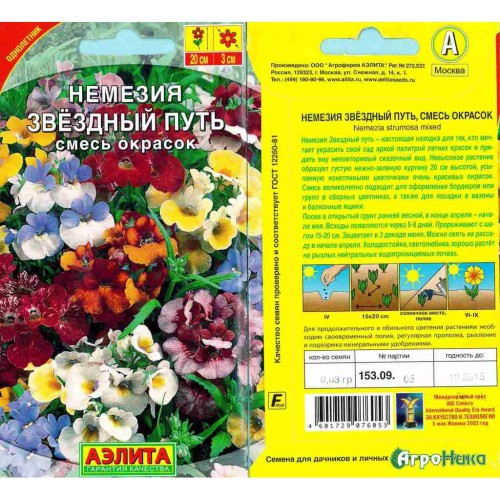
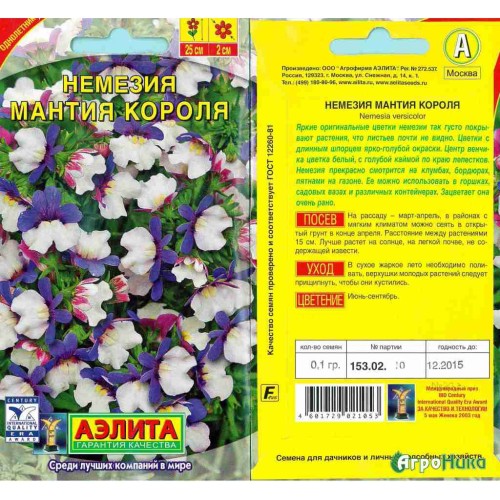
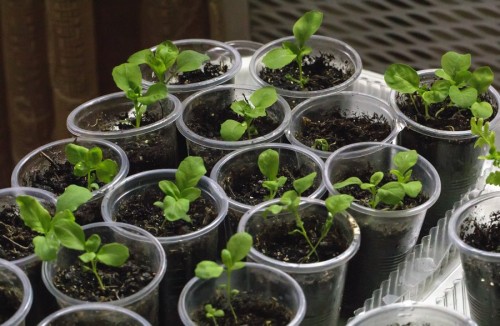

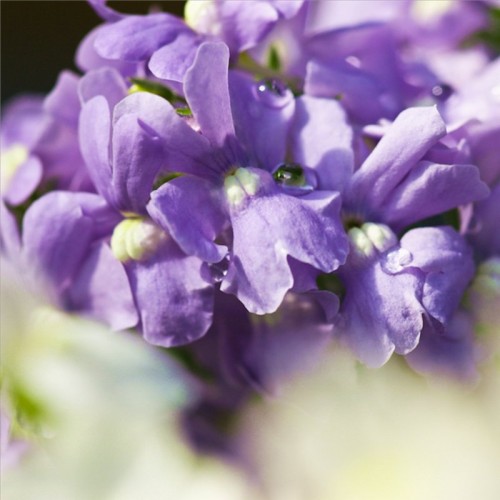
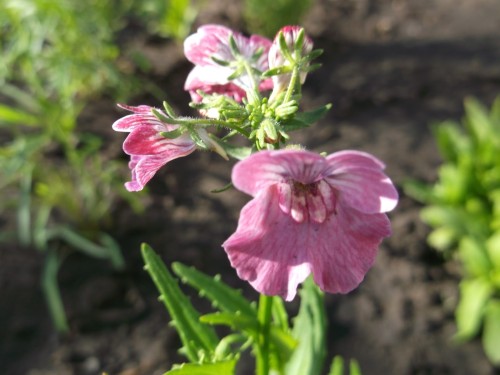
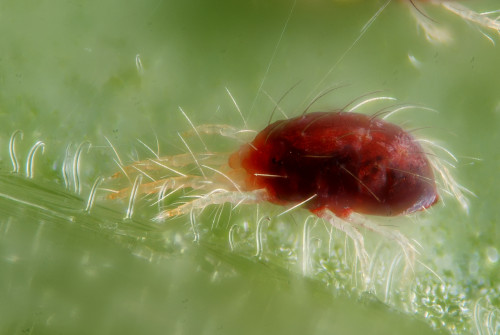
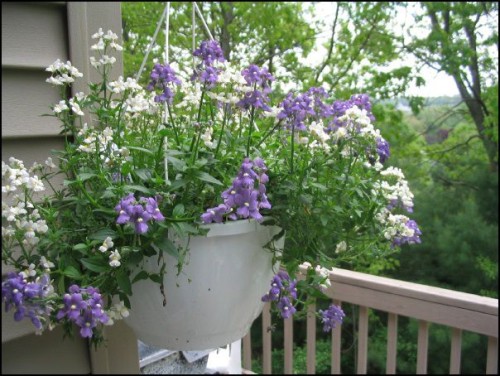
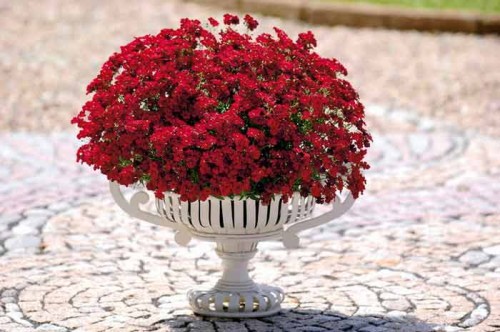
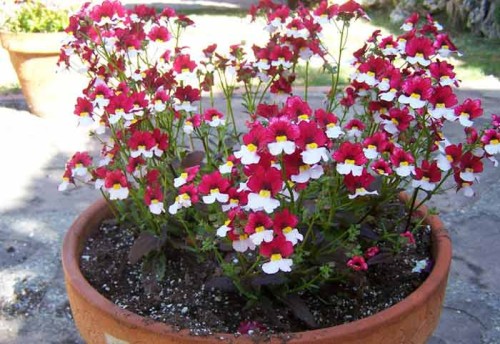
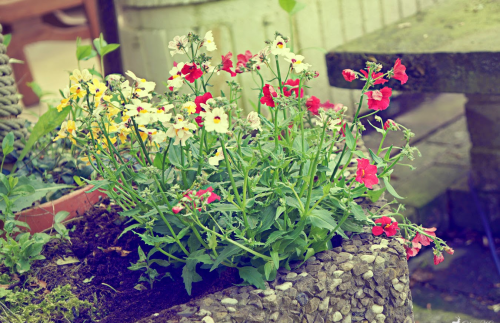












 Start a discussion ...
Start a discussion ...